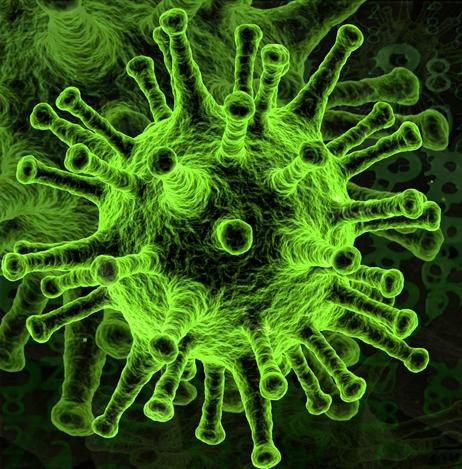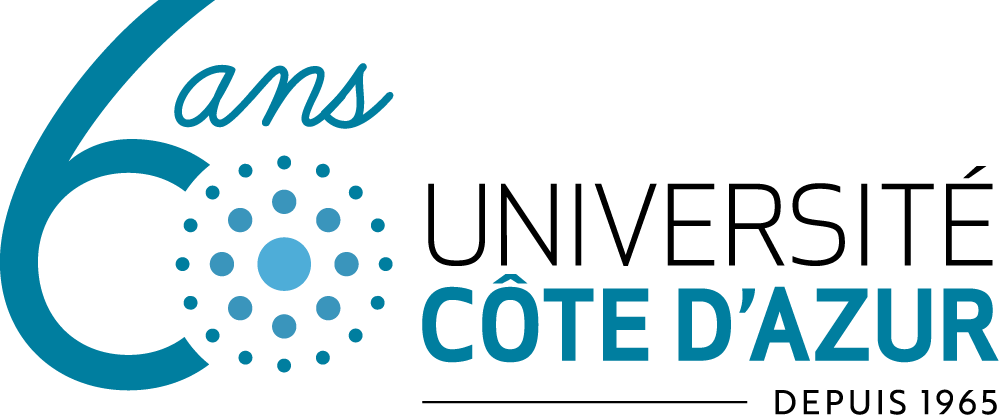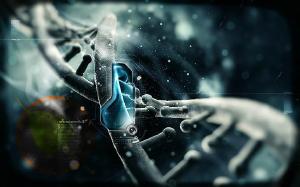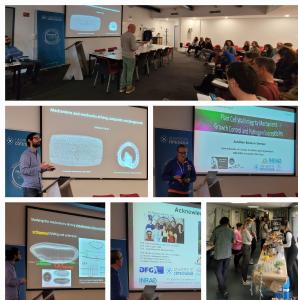Académie d'Excellence "Complexité et diversité du vivant"
on the March 16, 2021
Online

It is our pleasure to announce the Academy 4 Research Webinars on Bio-Medical & Transdisciplinary Topics.
They take place every 3rd Tuesday of the Month.
Please register to carole.baron@univ-cotedazur.fr to attend the webinars.
The 1st session, on COVID-19, took place online on March 16th, 2021 at Noon.
PROGRAM
SPEAKER 1:
Pr Michel CARLES, MD, PhD, Chief of the Infectiology Unit, Pôle Spécialités Médicales, Faculté de Médecine de NICE, Université Côte d'Azur, F06600 NICE.
Title : Age and contamination by SARS-CoV2 - Variants Impact, the British example. What are the strakes of the oxygen therapy for the health care system?
SPEAKER 2:
Dr Pascal BARBRY, PhD, Directeur de Recherche, Université Côte d'Azur, Institut de Pharmacologie Moléculaire et Cellulaire (IPMC) UMR7275 CNRS/UNS 660 route des lucioles F06560 SOPHIA ANTIPOLIS.
Title : Tracking the diversity of SARS-CoV2 at a community level.
Abstract:
Around 23% SARS-CoV2-infected people never develop symptoms but can still actively spread the virus. Proper public health strategies to control transmission need to distinguish infection by these asymptomatic people from infection by people during a pre-symptomatic period. Such an information can be difficult to gather, requiring detailed contact tracing efforts via epidemiologic investigations among cases and contacts. These expensive approaches are untenable at a long term and call for the development of alternatives to draw a global picture of the virus distribution at a community level. The CAGABLEA project is intended to track SARS-CoV2 in wasted waters from the METROPOLE NICE COTE D'AZUR. Since September 2020, a full pipeline has been set up to collect samples in about 20 representative areas of the city and draw a comprehensive picture of dispersion of the viruses in the whole population. Viruses are extracted from water, and RNA is sequenced using nanopore sequencing. A bioinformatic pipeline has been developed in order to assess the diversity of the different variants. From October 2020 to February 2021, we have been able to recapitulate the whole SARS-CoV2 population with less than 10 different lineages, which were dominated by B.1.160 and B.1.177 until January. In January, we noticed an emergence of B.1.1.7 (so called "U-K variant") in one particular area of the city ("Les Moulins") in which it represented 45,8% of the total viral population. In February, a uniform and high concentration of B.1.1.7 was found in the entire city, which corresponded to 80% of total. A strong parallel was found between our data and independent clinical observations. Altogether, they demonstrate the interest of this approach, which can be easily extended to other infective agents.
Keywords: SARS-CoV2, symptoms, virus variants, pandemy, wasted water, nanopore sequencing, bioinformatic pipeline
Usefull link(s): https://www.ipmc.cnrs.fr/cgi-bin/site.cgi?page=barbry
Related bibiography:
- Fassy J et al. PlOS One. 2021. Versatile and flexible microfluidic qPCR test for high-throughput SARS-CoV-2 and cellular response detection in nasopharyngeal swab samples. In press. https://hal.archives-ouvertes.fr/hal-03052294
- Courjon J et al. Heterogeneous NLRP3 Inflammasome signature in circulating myeloid cells as a biomarker of COVID-19 severity. Blood Adv. 2021 Mar 9;5(5):1523-1534. doi: 10.1182/bloodadvances.2020003918.
- Muus C et al. Single-cell meta-analysis of SARS-CoV-2 entry genes across tissues and demographics. Nat Med. 2021;2. doi:10.1038/s41591-020-01227-z.
- COVID-ICU Group on behalf of the REVA Network and the COVID-ICU Investigators. Clinical characteristics and day-90 outcomes of 4244 critically ill adults with COVID-19: a prospective cohort study. Intensive Care Med. 2021 Jan;47(1):60-73. doi: 10.1007/s00134-020-06294-x.
- Ziegler CGK et al. SARS-CoV-2 Receptor ACE2 Is an Interferon-Stimulated Gene in Human Airway Epithelial Cells and Is Detected in Specific Cell Subsets across Tissues. Cell. 2020 May 28;181(5):1016-1035.e19. doi: 10.1016/j.cell.2020.04.035.
- Annweiler C et al. COvid-19 and high-dose VITamin D supplementation TRIAL in high-risk older patients (COVIT-TRIAL): study protocol for a randomized controlled trial. Trials. 2020 Dec 28;21(1):1031. doi: 10.1186/s13063-020-04928-5.
- Chaumont H et al. Mixed central and peripheral nervous system disorders in severe SARS-CoV-2 infection. J Neurol. 2020 Nov;267(11):3121-3127. doi: 10.1007/s00415-020-09986-y.
- Deprez M et al. A Single-Cell Atlas of the Human Healthy Airways. Am J Respir Crit Care Med. 2020;202: 1636–1645. doi:10.1164/rccm.201911-2199OC
- Sungnak W et al. SARS-CoV-2 Entry Genes Are Most Highly Expressed in Nasal Goblet and Ciliated Cells within Human Airways. Nat Med. 2020. Available: http://arxiv.org/abs/2003.06122.
- Pettit SD et al. 'All In': a pragmatic framework for COVID-19 testing and action on a global scale. EMBO Mol Med. 2020 Jun 8;12(6):e12634. doi:10.15252/emmm.202012634.
- Ruiz García S et al. Novel dynamics of human mucociliary differentiation revealed by single-cell RNA sequencing of nasal epithelial cultures. Development. 2019. doi:10.1242/dev.177428.
ORGANIZERS:
Academy of Excellence 4 "Complexity & Diversity of the Living Systems"
Academy of Excellence 5 "Human Societies, Ideas and Environments"
Graduate School and Research HEALTHY - Health Science Ecosystems
Graduate School and Research LIFE - Life and Health Sciences
Institute NeuroMod - Cognitive Systems, Normality and Pathology of the Human Brain and Computational Neurosciences
Labex SIGNALIFE - Network for Innovation on Signal Transduction Pathways in Life Sciences




















